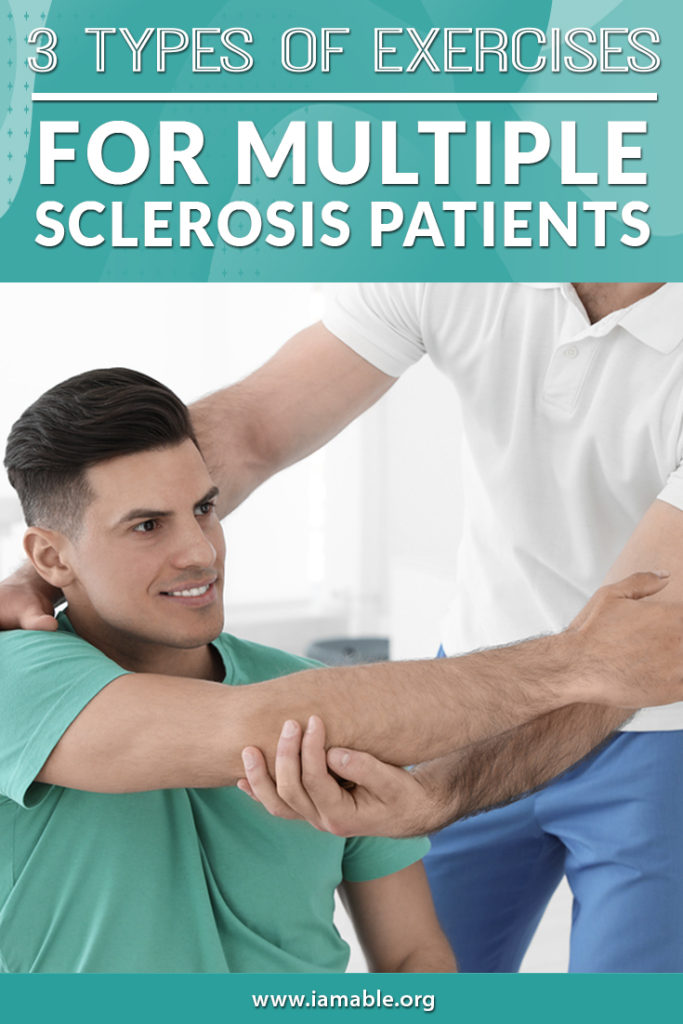Miami, FL 33186

Multiple sclerosis is a disease that shares neurological and autoimmune symptoms. When a person has MS, his or her immune system attacks its own nerves. In particular, damage occurs in the myelin sheath that protects nerve fibers. Scar tissue forms, and the result is communication problems throughout the body.
As a result, there are many symptoms of multiple sclerosis, including numbness, weakness, or even paralysis in parts of the body. You might also experience tremors, vision problems, speech issues, fatigue, dizziness, and problems with the digestive, excretory, and reproductive systems.
Are there any exercises for multiple sclerosis that can help mitigate symptoms? We are going to take a look at three types of activities that are vital for MS patients. Within the categories, we will also discuss a few specific exercises that some patients have found beneficial. Get ready to learn why every multiple sclerosis patient needs to have a daily exercise routine.
Aerobic exercise is essential for everyone because it improves heart and respiratory health. We can’t live without those two critical bodily functions. However, you may wonder how much cardio you can do, depending on how advanced your condition is.
If you are able to do some cycling, that is a fantastic aerobic workout. However, if MS is causing balance issues, a stationary bike will be much safer than riding a bicycle out on the road. Walking at a good pace can also count as aerobic exercise. Marching in place can be a good exercise because it combines aerobics with balance. The higher you can lift your knees, the more you are intensifying the workout as well as making your body work to balance itself.
Additionally, water aerobics may be optimal for MS patients. It can be easier to workout thanks to the buoyancy of water. Various forms of equipment, such as pool noodles, may help. Be sure to train under the supervision of a physical therapist.
In order to receive the most benefits from cardio exercise, most experts agree that you want to exercise at least three times per week in 30-minute or longer sessions. However, heat intolerance is also a common problem for patients with MS, so you don’t want to get too hot. That could mean cycling on a stationary bike in an airconditioned fitness facility, walking during the cooler part of the day, or doing water aerobics in a pool not heated beyond 84 degrees.
You should stretch daily to help relieve muscle stiffness or tightness. Stretching also helps the body to maintain an optimal range of motion. If your symptoms include spasticity (when muscles stay contracted at times), stretching becomes even more critical.
The National MS Society outlines stretches grouped into eight different categories that MS patients can perform. It also contains reminders to keep the room cool while exercising, to avoid forcing movements that hurt, to take it slow and hold your stretches for 30 seconds, and to use your stronger side to support your weaker side. Sipping cool water can also help you to avoid overheating.
Resistance training or strength building exercises do not need to involve a lot of weight to be effective. In fact, many recommend exercises primarily use your own bodyweight. Under the oversight of a health practitioner, you can progressively increase the amount of weight or the number of repetitions in order to build up your strength even further.
When muscles are not used, perhaps due to weakness or numb sensations, they tend to grow weaker rapidly. Therefore, strength training can work against any muscle mass loss that you have already experienced and can help to prevent further loss. Additionally, strengthening muscles in your core can help to improve your balance even further. Here are a few exercises that can build up key muscle groups:
Your ability to persevere through challenging exercises for multiple sclerosis may depend on your attitude toward the benefits derived from physical training. This is especially so if you have limited ability at the beginning of your exercises or therapy. The book 7 Unbelievably Important Steps to Take to Thrive after Paralysis has many sound principles that apply, even if your health condition does not result in complete paralysis. Download it today to start training your mind for the journey you need to take your body on in order to maintain your independence to the highest degree possible.
Grab our free e-book 7 Unbelievably Important Steps to Take to THRIVE after Paralysis by clicking the image below.
